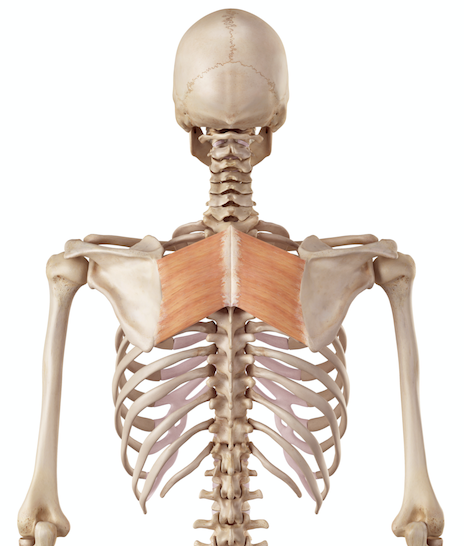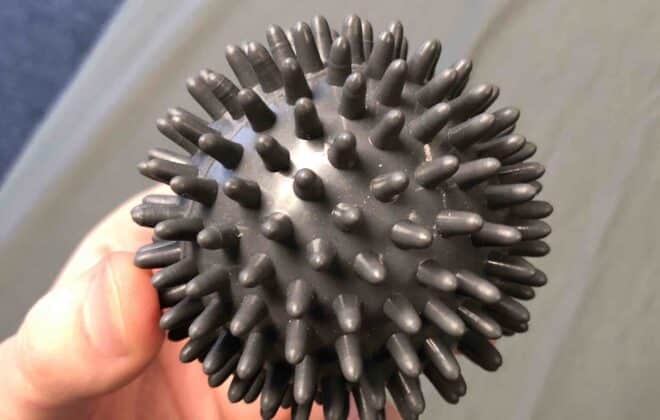Top 5 Exercises for Rhomboids: Strengthening Your Upper Back Muscles
If you’re looking to improve your posture, prevent injury, and boost your athletic performance, then it’s time to focus on strengthening your rhomboid muscles.
These muscles play a crucial role in scapular stability and upper back strength, making them essential for maintaining good posture and preventing shoulder injuries.
Fortunately, there are plenty of exercises you can do to target your rhomboids and build a strong, resilient upper back.
In this article, we’ll introduce you to the top 5 exercises for rhomboids that are effective, safe, and easy to perform. The various and best rhomboid exercises include:
- Prone Y Raises
- Scapular Retractions
- Seated Cable Rows
- Bent Over Rows
- Face Pulls
So, let’s dive in and discover how to strengthen your upper back muscles for a healthier, happier you!
The Importance of Rhomboids
When it comes to upper back strength and stability, the rhomboid muscles play a crucial role. These small but mighty muscles, located between the shoulder blades, are responsible for several important functions that are essential to proper shoulder and upper back movement.

The rhomboid muscles work to retract the scapulae (shoulder blades) and rotate them downward. This movement is necessary for several everyday activities, such as reaching overhead or pulling objects towards the body.
In addition to shoulder blade movement, the rhomboids also play a role in maintaining proper posture and spinal alignment. Strong rhomboid muscles help to stabilize the scapulae and maintain a neutral position of the shoulder joint and spine, reducing the risk of injury and pain.
If the rhomboid muscles are weak, it can lead to several issues, including bad posture, shoulder pain, and upper back pain. Poor posture, in particular, is a common problem associated with weak rhomboids.
When the rhomboids are weak, the shoulders tend to round forward, leading to a slouched posture. This posture can contribute to shoulder pain and upper back pain over time.
In addition, weak and undertrained rhomboids can also cause other muscles in the upper back and shoulders to overcompensate, leading to further imbalances and potential injuries.
Strengthening the rhomboids is therefore essential for overall upper body health and injury prevention. Let’s dive into that in the next section.
5 Best Exercises for Rhomboids
Having strong and healthy rhomboids is crucial for maintaining good posture, preventing shoulder injuries, and improving overall upper body strength. Here are the top 5 best exercises for rhomboids:
Prone Y Raises
This exercise involves lying on your stomach and raising your arms and upper body to form a “Y” shape. It targets the rhomboids and the lower traps, helping to improve posture and scapular stability.
- Lie on your stomach with your arms stretched overhead in a Y shape
- Lift your chest and arms off the ground while squeezing your shoulder blades together
- Hold for a few seconds and lower back down
- Aim for 3 sets of 10-12 reps
Scapular Retractions
This simple rhomboid exercise involves squeezing your shoulder blades together at the rhomboid minor area while keeping your arms straight to create tension. It can be done throughout the day often to build coordination and endurance.
- Sit or stand with your arms at your sides
- Squeeze your shoulder blades together and hold for a few seconds before going to the starting position
- Release and repeat for 3 sets of 10-12 reps
Seated Cable Rows
This cable row exercise involves sitting on a bench and pulling a cable towards your upper body pressing exercises up, while keeping your back straight and shoulders down. It targets the rhomboids and other upper back muscles, as well as the biceps and forearms.
- Sit in front of a cable machine with your feet on the platform and your knees slightly bent
- Grab the cable handles with your arms extended in front of you
- Pull the handles back towards your chest while squeezing your shoulder blades together
- Slowly reverse, release and repeat for 3 sets of 10-12 reps
Bent Over Rows
This exercise involves bending forward at the waist with a weight in your hands and pulling it towards your chest. It targets the rhomboids, as well as the lower back, biceps, and forearms.
- Hold a dumbbell in each hand with your palms facing down
- Hinge forward at the hips with a slight bend in your knees
- Pull the dumbbells up towards your chest while squeezing your shoulder blades together
- Slowly lower and repeat for 3 sets of 10-12 reps
Face Pulls
This exercise involves pulling a cable toward your face while keeping your elbows high and shoulders down. It targets the rhomboids and other upper back muscles, as well as the rear delts and rotator cuff.
- Attach a rope handle to a cable machine at face height
- Grab the rope with your palms facing down and step back
- Pull the rope towards your face while squeezing your shoulder blades together
- Slowly release and repeat for 3 sets of 10-12 reps
Incorporating these exercises such as pulling exercises, bench press, pull ups into your upper body workout routine can help strengthen your rhomboids and improve your overall posture and shoulder health.
Remember to start with lighter weights and gradually increase as you get stronger, and always maintain proper form to prevent injury.
Tips for Effective Rhomboid Exercises
The rhomboids are essential muscles for maintaining good posture and shoulder stability. Strengthening these muscles through targeted exercises can improve your overall upper body strength and help prevent injury.
However, performing rhomboid exercises incorrectly can lead to limited results or even injury. To maximize the effectiveness and range of motion of your rhomboid exercises, consider the following tips:
- Focus on scapular retraction and depression: To properly activate the rhomboids, it’s important to focus on pulling your shoulder blades back and down throughout the exercises. This will help target the muscles and prevent compensations with other muscles.
- Engage the core during all exercises: Engaging your core muscles during rhomboid exercises will help stabilize your spine and maintain proper form. This can help you avoid injuries and maximize the benefits of the exercises.
- Use a slow and controlled motion: Performing rhomboid exercises with a slow and controlled motion ensures that you are targeting the correct muscles and not using momentum to complete the movement. This can also help prevent injuries.
- Prioritize quality over quantity of repetitions: The quality of your reps is more important than quantity. Focus on performing each repetition with proper form, scapular retraction, and a controlled motion. Doing fewer reps with good form is more beneficial than performing more reps with poor form.
- Progressively increase resistance and/or volume: As you become stronger, it’s important to continue challenging your rhomboid muscles to see continued progress. Increase the resistance by using heavier weights or resistance bands, or increase the volume by performing more sets or reps. However, progress slowly and ensure you can perform each exercise with proper form before increasing the resistance or volume.
Integrating Rhomboid Exercises into Your Workout Routine
Integrating rhomboid exercises into your workout routine can help improve your posture, scapular stability, and overall upper body strength.
Here are some suggestions on how to incorporate the rhomboid muscle exercises into your routine:
Frequency:
- Aim to train your rhomboids 2-3 times per week
- Allow at least 48 hours of rest between sessions to allow for muscle recovery
Sets and Reps:
- Perform 2-3 sets of each exercise
- Aim for 10-15 reps per set
- Increase the weight or resistance gradually as you get stronger
Rest Periods:
- Rest for 30-60 seconds between sets
- Allow for longer rest periods (1-2 minutes) between exercises that involve heavier weights
Example Workout Plan:
Upper Body Day 1:
- Prone Y Raises – 3 sets of 12 reps
- Seated Cable Rows – 3 sets of 12 reps
- Dumbbell Shoulder Press – 3 sets of 10 reps
- Bicep Curls – 3 sets of 10 reps
Upper Body Day 2:
- Scapular Retractions – 3 sets of 15 reps
- Bent Over Rows – 3 sets of 12 reps
- Tricep Pushdowns – 3 sets of 12 reps
- Hammer Curls – 3 sets of 10 reps
Note: It’s essential to engage your core during all exercises to maintain proper form and avoid injuries.
As you progress, gradually increase the resistance and/or volume of your rhomboid exercises to continue challenging your muscles.
Also, make sure to take rest days and listen to your body to avoid overtraining.
Top 5 Exercises for Rhomboids: Strengthening Your Upper Back Muscles: Frequently Asked Questions
-
How often should I perform exercises for rhomboids?
It’s recommended to perform rhomboid exercises 2-3 times a week. This allows enough time for the muscles to recover while still providing enough stimulus for strength and growth
-
Can these exercises help with posture correction?
Yes, rhomboid exercises can help correct poor posture by strengthening the upper back muscles, which helps maintain better posture and proper alignment of the shoulders and spine.
-
Are rhomboid exercises beneficial for injury prevention?
Yes, strengthening the rhomboid muscles can help prevent injuries by improving scapular stability and reducing the risk of shoulder impingement and other upper back injuries.
-
How long does it take to see results from rhomboid exercises?
Results can vary depending on individual factors such as frequency of exercise, intensity, and consistency. However, with regular practice and a proper diet, visible improvements in strength and posture can be seen in 4-6 weeks.
-
Can rhomboid exercises help with neck pain?
Yes, rhomboid exercises can indirectly help with neck pain by improving upper back posture, which can relieve tension on the neck muscles. However, it’s important to consult with a healthcare professional for an accurate diagnosis and treatment plan for any neck pain issues.
Conclusion
In conclusion, the rhomboid muscles play a crucial role in maintaining proper posture, scapular stability, and injury prevention.
By incorporating the top 5 exercises for rhomboids – Prone Y Raises, Scapular Retractions, Seated Cable Rows, Bent Over Rows, and Face Pulls, rowing exercises – into your workout routine, you can strengthen your upper back muscles, improve your bad posture, and reduce the risk of injury.
Remember to focus on scapular retraction and depression, engage your core, use slow and controlled movements, prioritize quality over quantity, and progressively increase resistance and/or volume.
By doing so, you can maximize the benefits of these postural exercises and see results in as little as a few weeks.
Don’t forget to consult a healthcare professional if you experience any pain or discomfort. So, start incorporating these exercises into your workout routine and enjoy the benefits of a stronger and healthier upper back!
Sam Visnic
Most Popular Posts
Categories
- Deep Gluteal Pain Syndrome (8)
- Deltoids (2)
- Foam Rolling (2)
- Glutes (9)
- Hamstrings (5)
- Hypnosis for Pain (3)
- Lats (2)
- Levator Scapulae (4)
- Lifestyle (8)
- Massage Therapy (39)
- Mobility (21)
- Movement and Exercise (19)
- Muscles (22)
- Nutrition (2)
- Obliques (1)
- Pain (25)
- Pectorals (3)
- Piriformis (3)
- Plantar Fasciitis (11)
- Psoas (11)
- Quadratus Lumborum (3)
- Quadriceps (2)
- Rhomboids (3)
- Sciatica (1)
- Serratus Anterior (1)
- SI Joint (14)
- Sternocleidomastoid (1)
- Stretching (18)
- Subscapularis (1)
- TMJ (2)
- Trapezius (1)
- Uncategorized (12)









